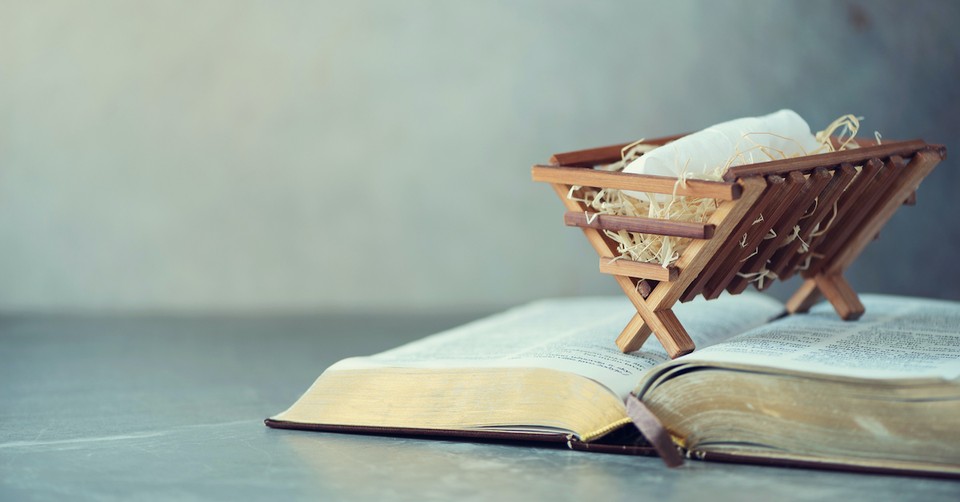How to Make the Nativity Story Fun for Kids at Christmas

Christmas, perhaps more than any holiday, is a season filled with traditions. From Christmas dinners to special outings and caroling, decorations, and gift-giving, traditions, both big and small, carry important truths. They teach important lessons and help us communicate and pass on shared history and values to our children and future generations.
Christmas should be a season of celebration and joy. Traditions help with this. According to the online etymology dictionary, the word nativity comes from the word nativite, a “feast day celebrating the birth of Christ. However, with everything from Santa Claus to snowmen, gingerbread houses, and literal flashing lights vying for our attention (and money), enjoying the merriment of Christmas while keeping our celebration and traditions focused on the true reason for the season, the birth of Jesus Christ, is no easy feat.
Furthermore, with countless Christmas movies, books, and other tales filling the holidays, how can parents teach their children about the true meaning of Christmas while making the nativity story fun for kids at the same time? Here are a few ideas.
Read the Nativity Story Together as a Family
It may sound simple but reading the nativity story together as a family is an incredible tradition that often gets marginalized or neglected amidst the vast creativity and chaos of the Christmas season.
However, just because our children are inundated with movies, video games, and other forms of visual media does not mean that reading is boring or obsolete. We should never underestimate the power of God’s Word or the effectiveness of reading, especially as a family.
Furthermore, trying to capture a child’s attention by being bigger or louder than the latest video game or Netflix show isn’t the solution. Sometimes, a quieter approach can be just as powerful, if not more effective. Set time aside on Christmas Eve or Christmas morning to actually read the nativity story to your children from the Bible. Make it fun. Make it a tradition.
Read it in the closing moments of Christmas Eve or first thing on Christmas morning. Read it by candlelight, beneath the star of your Christmas tree, or outside by a fire with a cup of hot chocolate in hand. Whether one parent is the designated reader or children take turns reading portions of Luke 2 and/or Matthew 1 and 2, read the nativity story together.
Make reading the Bible as a family a Christmas tradition and challenge yourself to continue this tradition beyond the holidays.
Use the Advent Calendar to Create Anticipation and Hope in Jesus
Derived from the Latin word “adventus”, meaning “arrival” or “coming”, advent was created as a tradition in the church to prepare the hearts of believers for the celebration and commemoration of the birth of Jesus Christ.
To this day, Christians around the world light candles, recite prayers, and fashion decorative wreaths to symbolize the newness and promise of eternal life and salvation offered through the sacrifice of Jesus Christ. In many traditions, the lighting of weekly candles is used as a way for children to count down the days until Christmas.
Of course, there are many kinds of advent calendars. Some include candies, notes, or toys for kids to open each day of December. While there is nothing wrong with these calendars, most commercial advent calendars prepare kids for the arrival of Santa Claus and the opening of presents more than the actual arrival of God’s only Son.
The focus of this tradition, however, can easily be redirected back to Christ with a few simple activities. Yes, a countdown and small treats can get kids excited for Christmas morning. However, an advent calendar is also a perfect way to teach children about anticipation, waiting, and finding hope in the promises of God.
As Israelites like Simeon (Luke 2:25-35) and Anna (Luke 2:36-38) eagerly awaited the coming of the Messiah and redemption of Israel, we too can use the advent calendar to prepare our children for the celebration of Christ’s birth and anticipation of His second coming.
Use each day of the advent calendar to discuss the promises of God found in Scripture. Paint them on ornaments for the Christmas tree or include them in decorations around the house. Pray together as a family every day leading up to Christmas, asking Jesus to meet specific needs. Save those prayers and revisit them every year.
Use the countdown to talk about Mary’s joy and expectation as a pregnant mother. If possible, tell the story of your own child’s birth to talk about your anticipation in waiting/preparing for their arrival. Beyond a typical wish list, encourage kids to write down their hopes for the coming year and what they’re most excited about when Jesus returns. Make time to revisit stories from your family history and share about God’s faithfulness throughout the year.
Connect Old Testament Prophesies to the Birth of Jesus
As part of your advent tradition, try using the days leading up to Christmas to help your children search the Old Testament for prophecies of the Messiah that came true in the birth of Jesus.
Rather than having your children search for an Elf on the Shelf (there is nothing wrong with this activity by the way), try placing an Old Testament prophesy around the house for them to find each morning. Read them. Talk about them. Explain their context. Have children save those verses. Then on the night you read the nativity story from Luke 2 or Matthew’s gospel, see how many Old Testament prophesies they can connect to the events of the nativity story.
Use Lights and Candles to Celebrate Jesus Christ as the Light of the World
Christmas lights are an essential component to most Christmas decorations, making entire neighborhoods merry and bright in the month of December. Biblically, light is also a key metaphor for hope and the presence of God. Jesus, Himself said, “I am the light of the world; the one who follows Me will not walk in the darkness, but will have the Light of life.” (John 8:12)
Parents can use Christmas lights and candles in the home to symbolize the significance of Christ’s presence being a light in a dark world. Let your kids light a new candle every night or every week. Try starting with a small light at the beginning of the month, then progressively add more lights to brighten the home as you get closer to Christmas and the birth of Jesus.
Use lights around the home to guide children to activities or decorations that tell the story of Christ’s birth. Go outside and look at the stars. Teach children about the light of the stars being used to guide explorers throughout history and how the star of Bethlehem helped the wise men find the place of Christ’s birth. Use Christmas lights to discuss ways your children can be a light to others.
Trace Mary and Joseph’s Journey to Bethlehem on the Map
Another way to help kids connect with the nativity story is by tracing Mary and Joseph’s long and arduous journey from Nazareth to Bethlehem. Try downloading and printing out a map of Israel. Put it up in the home or laminate it and make it a placemat or runner at the kitchen table. Let little kids trace Mary and Joseph’s journey as they eat.
In the week leading up to Christmas, move a small cutout of Mary and Joseph closer to Bethlehem and Christmas day. Consider including the journey of the shepherds to Bethlehem or wise men from the east on your map. Revisit your own family birthplaces or let your kids calculate how long it would take to return to the location of their birth by plane, by car, or by donkey/on foot, as Joseph and Mary were required to do.
For older kids, reference specific cities on the map that Jesus would later visit during His ministry. Use the nativity story and its key features to explore the geography of the gospels that your kids can become familiar with as they get older.
Recreate the Nativity Scene in the Home
With decorations and hands-on crafts and activities, children can also recreate the nativity scene in the home. This doesn’t have to be an expensive tradition. Using household items, basic craft supplies, or kid-friendly playsets, younger children can recreate the nativity scene and place various characters in their rightful places.
Try creating different nativity scenes in different locations around the house. For example, find a field for the shepherds to graze their sheep or a different spot for the wise men to travel the desert. Then, on Christmas morning, encourage your kids to bring the various characters to the stable to celebrate the birth of Jesus.
No nativity scene will be perfect or fully accurate to the actual first Christmas, but that shouldn’t stop parents from using decorations to teach their children about the glory of Christmas morning and the often uncomfortable reality of Mary’s pregnancy and Jesus’ birth.
Explain the Nativity Story from Different Characters’ Point of View
The focus of the nativity story should always be on Jesus, however, there’s purpose in exploring the Christmas story from the perspective of those who witnessed the birth of the Messiah firsthand. Thankfully, there’s a plethora of wonderful children’s books and fun movies that tell the nativity story from other characters’ points of view, such as the shepherds, the wise men, the innkeeper, and even the donkey Mary rode to Bethlehem.
Let kids do the same. Cast them as different characters in the nativity story and encourage them to write out what they might have witnessed or experienced on the night Jesus was born. Encourage kids to dress up as different characters and reenact the nativity story in a short play. Interview various characters after the events of Jesus’ birth, then assemble them into video clips for a Bethlehem news show. Trust me. You’ll enjoy watching your home Christmas movie for years to come.
Let kids write out Mary and Joseph’s Christmas card. Have kids draw out specific scenes from the Bible account and piece them together to tell the nativity story. For older kids, try breaking the nativity story into a 24-episode miniseries and write out what should be included in each episode.
Teach the Nativity Story by Practicing Giving and Service
One of the key moments of the nativity story features the Bethlehem inn and subsequent lack of room for Mary and Joseph. In fact, it was Bethlehem’s capacity issues that resulted in Jesus being born in a nearby stable while the rest of Bethlehem slept. Parents can use similar distractions and the chaos of modern Christmas to teach their children about priorities and making room for Jesus in their lives.
Parents can also develop lifelong spiritual habits in their children by using Christmas as an opportunity to prioritize giving above receiving, encouraging their children to donate toys and clothes to other children, global ministries, and local shelters. As Jesus came to serve rather than be serve, volunteering and serving as a family can become a seasonal tradition, one that hopefully becomes a regular part of your children’s lives.
And rather than focusing on just their holiday goals, families can think beyond the home, inviting friends and neighbors into your home to share in your traditions. Teaching the nativity story should ultimately be fun. Christmas is a season for celebration and joy, and kids should find joy in the nativity story and traditions they share with their family.
Cherish your family traditions, and don’t be afraid to create new traditions this Christmas. Let the nativity story be at the center of your celebrations and you will pass on the joy of Christmas and truth of the gospel to your children and their children for years to come.
Photo credit: ©GettyImages/jchizhe

This article is part of our larger Christmas and Advent resource library centered around the events leading up to the birth of Jesus Christ. We hope these articles help you understand the meaning and story behind important Christian holidays and dates and encourage you as you take time to reflect on all that God has done for us through His Son, Jesus Christ!
What Is Christmas? It's History, Origin, and Traditions
The History and Origin of Santa Claus
Christmas Prayers and Blessings
The Beautiful Meaning and Purpose of Advent
Advent Prayers
Advent Wreath & Candles Meaning
The History and Meaning of the Advent Calendar
Originally published November 29, 2021.







